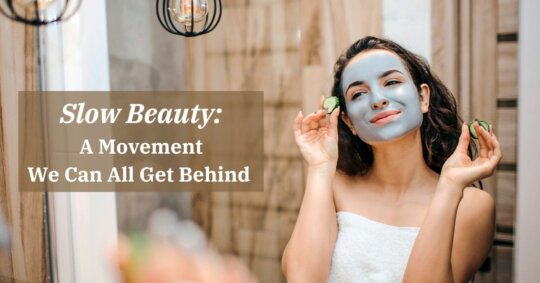Clean beauty is the talk of the town nowadays. And for good reasons. If you are new to this clean beauty world, then let us introduce you to the new black in the beauty industry. Clean beauty means makeup and skincare products formulated with toxic-free, clean ingredients. It also means ingredient transparency by the beauty brands, how and where the brand source their ingredients from, and if the beauty ingredient is safe to put on.
Clean beauty ingredients are healthy and safe for your skin and body. Nowadays, many products in the market claim to use clean ingredients, but how many actually do? You will see this term all over the internet today. However, what is those ‘clean’ ingredients? Here is a list of clean-label ingredients to help you choose your clean beauty products with proper information and wisely.
1. Aloe Vera
You might have heard the name of this clean-label ingredient often in clean beauty products. You can find this little one in tropical climates all across the globe, or can grow it in your own house. This little succulent has many benefits like healing and anti-inflammation epidermal properties for sunburn and wounds.
From skin diseases and infections to insect bites, aloe vera is an all-purpose super ingredient to look for in body and clean skincare products.
2. Argan Oil
Argan oil is a culinary staple in Morocco. Along with a subtle nutty flavor, argan oil also has many potential health benefits like reducing signs of aging and promoting wound healing. Although native to Morocco, argan oil is now used across the globe in lots of cosmetic and medicinal applications.
3. Bentonite Clay
Bentonite clay, an absorbent clay with an aluminum base, is quite common in nature. However, the largest mineral reserves are located in Fort Benton, Wyoming, which is where the mineral gets its name.
Since ancient times, people have used various clays (both internally and topically applied) to maintain their health. Studies have shown that bentonite is beneficial in treating irritating and allergic dermatitis, as well as hand dermatitis, diaper dermatitis, and other typical skin problems of infancy. It also works well as a moisturizing agent.
4. Avocado Oil
Avocado oil is one of the few plant oils that isn’t made from seeds; it is instead extracted by pressing the pulp from the avocado pip. This clean-label ingredient is extremely fatty (but nourishing). Avocado oil is used as a preventative measure against UV-induced skin damage and as an anti-inflammatory for skin conditions, including vulvar lichen sclerosus. In addition, it offers an efficient base for inexpensive organic cosmetics.
5. Cedarwood Oil
This essential oil is made from several conifers’ wood, roots, stumps, and foliage (i.e., species of plants, from trees to shrubs). According to others, it’s preferable to look for steam-distilled cedarwood oil from the evergreen conifers found close to the Atlantic and Morocco if you’re looking for a remedy. This is the best ingredient for skin care products.
6. Chamomile
Chamomile is most known for its powerful anti-inflammatory qualities that can reach the deepest layers of the skin. In one study, chamomile was found to be 60% more active than 0.25 percent hydrocortisone cream, which is used to treat swelling and inflammation. This clean-label ingredient is also useful in a clean skincare routine for treating mild cases of eczema, skin irritation, sunburn, rashes, and ulcers.
7. Ethyl Macadamiate
A clear, colorless liquid known as ethyl macadamiate is non-volatile and non-greasy. It is very easily distributed and results from the saponification process (conversion of fat or oil into soap and alcohol by using heat and an alkali).
Ethyle macadamiate is the best ingredient for the skin that is mostly used in moisturizers. It’s been hypothesized that the phenolic chemicals in nuts have a stronger antioxidant potential than nutritional antioxidants like Vitamin E and selenium; this is true despite the fact that there hasn’t been much research, particularly on macadamia nuts (or nuts in general).
8. Glycerin or Glycerol
Glycerin is a non-toxic, flavorless, and colorless liquid. It is a naturally occurring component of all lipids or fats, including the skin. Typically, it comes from plants and animals, but it can also be made synthetically; watch out for propylene glycol and PEG silicone. Although these are regarded as humectants and may leave your skin feeling soft and supple, they are devoid of nutrients; so they can irritate the skin, resulting in rashes and raising the chance of developing dermatitis.
9. Hemp Seed Oil
Hemp seed oil, which is distinct from hash oil, is made from the cannabis flower. It is made by pressing the hemp seeds. Hemp seed oil is dark to light green in color and smells nutty. It supports the skin’s normal processes by providing trace elements and minerals. Inhibiting skin oxidative stress and matrix metalloproteinases (i.e., enzymes that contribute to skin degradation) with the help of algae’s antioxidant and anti-photoaging qualities has been proven to be highly effective.
10. Jojoba Oil
There are several different names for jojoba, including goat nut, deer nut, quinine nut, and coffee berry. The jojoba shrub, which is native to the western United States and northwest Mexico, produces non-fragrant oil from its seeds. Its chemical composition is quite similar to human sebum, the oil or lubricant our skin produces. As a result, it absorbs quickly into the skin and works well to moisturize and balance the skin’s natural oils without clogging pores. Additionally, it contains antibacterial, anti-inflammatory, and antioxidant effects.
You don’t need questionable ingredients to look beautiful — or feel great in your skincare. Clean beauty ingredients are a growing trend, and that’s because they’re doing more for you than substances with unknown origins ever will. There are so many unknowns when it comes to individual brands, but you can be sure of one thing —clean beauty products are the safest to put on your skin. If this is what you’ve been looking for, you’re in luck! On your next shopping trip for beauty products, don’t forget to check the packging or label of the products for these clean beauty ingredients.









